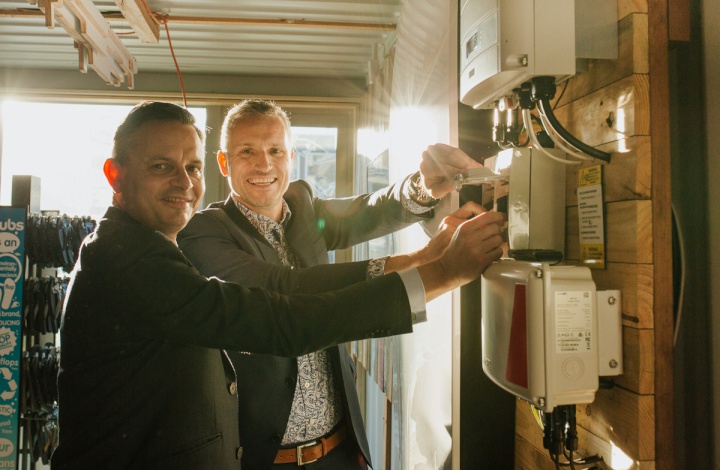New Zealand is Switching on to Solar
Friday, 12 October 2018
Leading Eco Building Latest Evidence New Zealand is Switching on to Solar

A charity events space committed to producing 105% of its energy needs is already beating this by more than 50%, thanks to solar and battery solution from energy company Vector.
Just one week into a year-long assessment period for the Living Building Challenge, the Sustainable Coastlines Flagship Education Centre is already generating 164% of its energy needs.
“Both Vector and Sustainable Coastlines are committed to a smarter, cleaner future and small-scale solar on commercial rooftops like this show how easy it is to take practical steps to decarbonise,” said Simon Mackenzie, Vector Group Chief Executive.
Officially switched on Friday, 5 October, by Minister for Climate Change James Shaw, the building is on track to become just the 16th Living Building in the world, and the second outside the US.
The solar and battery system generates enough electricity to fully power the Centre during normal business operations, with surplus exported back to the grid.
“There are plenty of rooftops large and small around the country where we could put solar, with a real potential to reduce energy prices and increase grid resilience and enable consumer choice,” said Mr Mackenzie.
“With similar technology on Vector Lights, the Flagship and the Karanga Kiosk all nearby, we think that Wynyard Quarter has become a showcase of the renewable energy options that we should be making more of as a country.”
“If we are to meet our ambitious goal as a nation to be net zero carbon by 2050, the more we use solar the better”.
To be certified under the Living Building Challenge, projects must meet a series of stringent performance requirements over a minimum of 12 months of continuous occupancy.
Solar
facts:
• A new solar array is installed in New Zealand
every 25 minutes, according to SEANZ.
• Greenpeace is
calling on the government to subsidise the installation of
residential solar systems on 500,000 homes.
• The
government has a stated aim of reaching 100% renewable
electricity, in a normal hydrological year, by
2035.
• There is about 14.5 MW of solar installed on
Vector's network already, including the 30-home Kāinga
Tuatahi housing development by Ngāti Whātua Ōrākei where
solar and batteries saved residents an average of $800 each
in power bills last year.
ENDS


 Canterbury Museum: Mystery Molars Lead To Discovery Of Giant Crayfish In Ancient Aotearoa New Zealand
Canterbury Museum: Mystery Molars Lead To Discovery Of Giant Crayfish In Ancient Aotearoa New Zealand Ngā Pae o te Māramatanga: Māori Concerns About Misuse Of Facial Recognition Technology Highlighted In Science
Ngā Pae o te Māramatanga: Māori Concerns About Misuse Of Facial Recognition Technology Highlighted In Science Retail NZ: Retailers Call For Flexibility On Easter Trading Hours
Retail NZ: Retailers Call For Flexibility On Easter Trading Hours WorkSafe NZ: Worker’s Six-Metre Fall Prompts Industry Call-Out
WorkSafe NZ: Worker’s Six-Metre Fall Prompts Industry Call-Out PSGR: Has MBIE Short-Circuited Good Process In Recent Government Reforms?
PSGR: Has MBIE Short-Circuited Good Process In Recent Government Reforms? The Reserve Bank of New Zealand: RBNZ’s Five Year Funding Agreement Published
The Reserve Bank of New Zealand: RBNZ’s Five Year Funding Agreement Published



